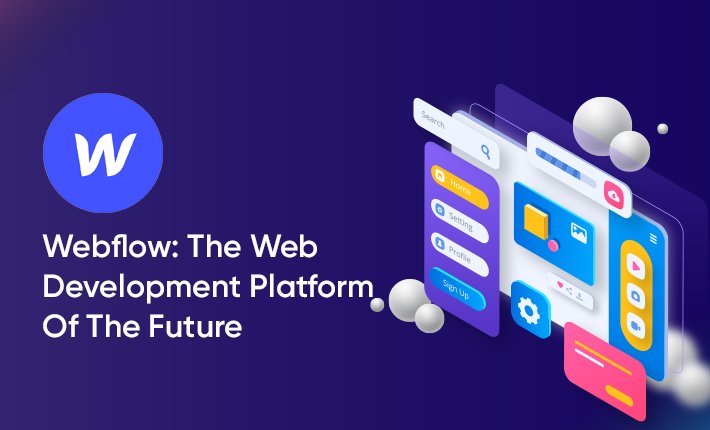WordPress vs. Webflow vs. Custom Code: What’s Right for Your Business?
WordPress in 2025: The Evolving CMS Champion
In the WordPress vs Webflow comparison, WordPress still shines—powering around 43.4–43.6% of all websites and holding over 61% of the CMS market. What started in 2003 as a simple blogging tool has evolved into a platform that supports everything from personal blogs to enterprise-level ecommerce.

Why Choose It?
- Powers nearly 40% of the web—In the WordPress vs Webflow comparison, WordPress is still dominant and trusted by personal blogs, enterprise sites, educational platforms, and ecommerce stores.
- Built-in blogging tools: post scheduling, version history, RSS, categories/tags, and comments right out of the box.
- SEO-first platform: In the WordPress vs Webflow debate, plugins like Yoast and Rank Math bring advanced SEO—schema markup, sitemaps, AMP support, breadcrumbs, and real-time optimization.
- Extensive plugin ecosystem: Over 60,000 plugins ranging from ecommerce (WooCommerce) to learning management, forums, membership subscriptions, multilingual sites, reservation systems, and beyond.
- AI-enhancements in 2025:
- Auto SEO suggestions while writing.
- AI-generated image alt-text using plugins like Alt Text AI.
- Smart table-of-contents creation, content drafts, and on-page performance tips.
- Bulk metadata/alt-text generation through AI tools for large sites.
Enhanced Capabilities
- Full ecommerce: WooCommerce enables inventory management, subscriptions, digital downloads, and payment gateways.
- Membership & community: Tools like BuddyPress and MemberPress create gated sites, forums, and learning portals.
- Image SEO automation: Plugins generate keyword-rich alt-tags across modern formats like WebP and AVIF.
- Multi-language: Support via WPML, Polylang, enabling global outreach.
Pros
- Customization galore: Anything from complex ecommerce to membership and content platforms.
- Vibrant community: Tons of resources, tutorials, forums, and support channels.
- Flexible hosting options: From budget shared plans to high-performance cloud setups.
Important Considerations in the WordPress vs Webflow Debate
- Self-managed hosting: You handle backups, SSL, security hardening, and updates.
- Plugin bloat risk: Many plugins or heavy themes can slow performance unless you optimize with caching and CDN tools.
- Maintenance overhead: Regular updates can occasionally break layouts or functionality—needs proactive monitoring.
Webflow in 2025: The Designer’s No-Code Canvas
In the WordPress vs Webflow comparison, Webflow empowers creative teams with pixel-perfect, no-code design and fully managed hosting. The new AI Assistant (beta) builds styled sections and CMS content from prompts, and per-page JS loading significantly boosts perform. With its intuitive drag-and-drop interface, Webflow is ideal for agencies and marketing-driven brands seeking fast, visual development.

Why Choose It
- Pixel-perfect visual design: In the WordPress vs Webflow comparison, Webflow delivers unmatched design precision with its intuitive drag‑and‑drop interface plus animations and interactions—no coding required.
- Fully-managed platform: CDN hosting, SSL, auto-code bundling, backups, and uptime handled—all without server headaches.
- Clean code export: In the WordPress vs Webflow debate, Webflow gives you lightweight, semantic HTML/CSS/JS ideal for SEO and fast page loads, supported by per-page asset loading, asynchronous scripts, and enterprise-grade infrastructure.
- Built-in SEO essentials: Metadata, alt-tags, redirects, XML sitemaps, and page indexing controls via visual interface.
- CMS & ecommerce: Manage blogs, portfolios, product catalogs visually; ecommerce stores support checkout, shipping, tax rules, coupons—no code required.
- Team collaboration: Shared libraries, component/pattern reuse, custom roles, staging environments, content previews, and version history.
- Enterprise-ready: Security, GDPR compliance, DDoS mitigation, and ISO-level hosting built-in.
2025 Feature Highlights
- Shared asset/library system: Central design library for teams across projects.
- Improved Figma-to-Webflow integration: Faster, cleaner code import of complex designs.
- CMS API delivery: Easily push CMS content to external apps or headless setups.
- AI Assistant & Site Builder: Auto-generate layouts, rewrite content tone, and optimize page copy in seconds.
- Per-page JS loading: ensures only necessary scripts/styles load per page, which gives Webflow a performance advantage in the WordPress vs Webflow speed debate .
- Wider bandwidth tiers: Teams can scale up to 2.5 TB monthly now.
Pros
- Design precision: Highest level of visual control without CSS.
- Strong performance: Fast, reliable, without needing manual optimization.
- Team-friendly workflow: Collaboration, preview, feedback, and shared assets built right in.
- Consistent security: You focus on design; Webflow manages hosting and protection.
- Considerations
- Pricing tiers: Site plans start $14–39+/mo; team plans ~$42/user/mo; enterprise is custom.
- Blogging limitations: No native comments, flat taxonomies, content-focused workflows may need workarounds.
- Manual schema additions: Advanced structured data like recipes or product markup require custom embeds.
- Export pain point: If migrating, rebuilding CMS setups elsewhere can be complex.
- Learning overhead: Non-coders may need time to grasp visual CSS concepts and components.
Custom Code: Full Technical Freedom
Why it’s a top choice in 2025:
- Leading frameworks like Next.js 15+ now offer automatic server-side rendering, incremental static regeneration, nested layouts, and React Server Components—enabling fast, SEO-friendly, dynamic apps with improved developer efficiency.
- Performance boost: Teams report cutting key metrics like FCP by 50–70% and TTI by 40%, thanks to hybrid SSR/SSG and edge middleware.
- SEO power: ISR enables instantaneous indexing of content updates; enterprise use cases (e.g., streaming services, product sites) have soared due to superior Core Web Vitals.
- AI & Web3 ready: Supporting serverless APIs, chatbots, WebAssembly, and Web3 integration—all within a performant, customizable stack.
What to consider:
- Custom solutions mean higher cost and longer timelines—your team will manage DevOps, CI/CD, monitoring, and security.
- These advanced frameworks require in-depth technical expertise, putting full responsibility on your developers.
Comparative Overview Table
| Feature | WordPress | Webflow | Custom Code |
|---|---|---|---|
| Design Control | Themes + CSS/JS + page builders | Pixel-perfect visual editor | 100% custom with any layout or design |
| SEO & Content Control | Plugin-driven schema, content posts | Built-in SEO; manual schema injection as needed | Code-managed schema, controlled meta, and SEO optimizations |
| Performance | Needs caching, CDNs, optimization | Host-managed and optimized speeds | Script splitting, edge caching, adaptive hydration techniques |
| Hosting & Security | Self-managed via host plugins | Platform-managed SSL, DDoS, backups | Entirely your operational responsibility |
| Cost | Low entry; plugin extras | ₹1,100–₹3,200+/mo (all included) | Highest—development + operations |
| Scalability | Blogs to enterprise solutions | SMB, portfolio, marketing sites | Fully scalable subject to resource availability |
| 2025 Trends | AI SEO, headless WordPress support | AI layout tools, eco-hosting, responsive CMS | JAMstack, SSR frameworks, Next.js 15+ enhancements |
SEO & Ranking Boosting Tips for 2025
- Long-tail keyword mapping: Create content around specific user questions and intent.
- On-page optimization: Use clear headings (H1–H4), optimized meta tags, and user-friendly URLs.
- Schema implementation: Enhance page value using JSON‑LD for Article, FAQ, and Breadcrumb schemas.
- Mobile-first & performance: Improve Core Web Vitals (LCP, FID, CLS); use CDNs, lazy loading, and optimized images.
- Link strategy: Do internal linking and add high-authority external links.
- Content freshness: Update old posts every six months.
- UX improvements: Provide better navigation, a search field, clear CTAs, and breadcrumbs.
- Analytics & testing: Track bounce rate and session duration; perform A/B tests.
- AI & answer-engine friendly content: Structure content to be snippet-friendly so it’s picked up by AI-generated answers.
- Human authorship: Keep your unique voice, experiences, and tone to make content authentic.
Conclusion: Which platform should you choose?
- WordPress: Ideal for content-rich sites needing strong SEO, blogs, community features, and plugin support—maintenance budget is medium to low.
- Webflow: Best for designer-centric sites, portfolios, and marketing pages offering fast deployment with low maintenance.
- Custom Code: Suited for teams needing full control, edge performance, and advanced integrations (AI/API/Web3), provided you have technical expertise.



